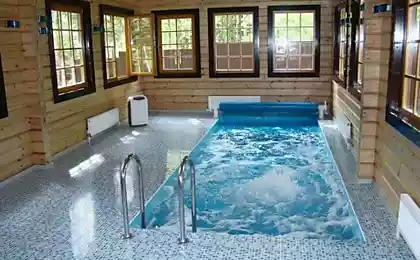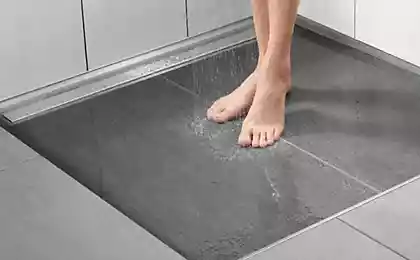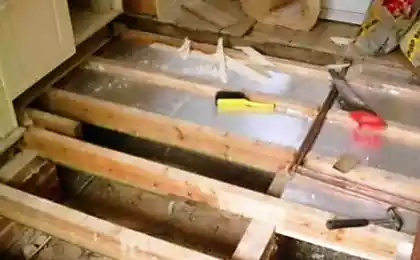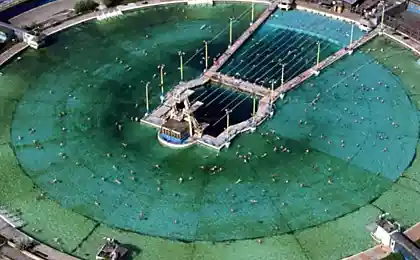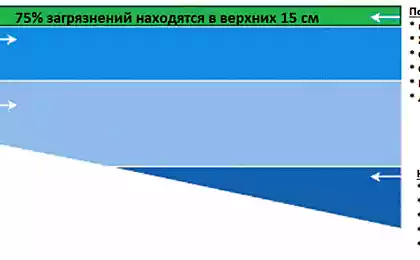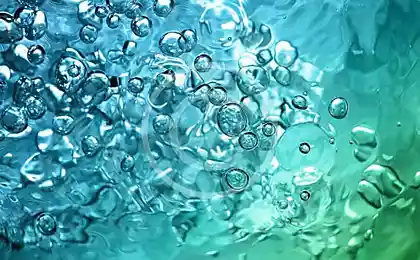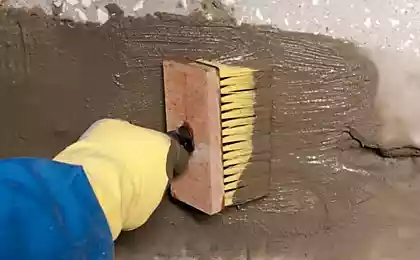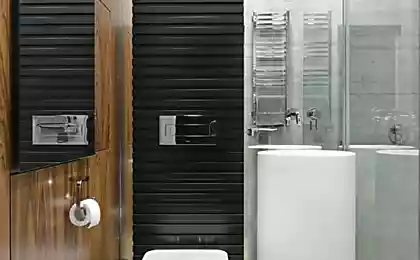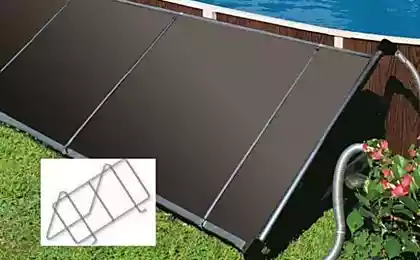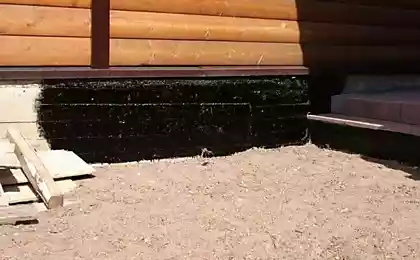519
How to choose waterproofing for swimming pool
Pool waterproofing is a strictly regulated set of activities aimed at protecting structures of the pool from the effects of the aquatic environment both outside and inside the pool. From the right choice of waterproofing materials and observance of technology of performance of works depend on the quality characteristics of the pool both open and closed.
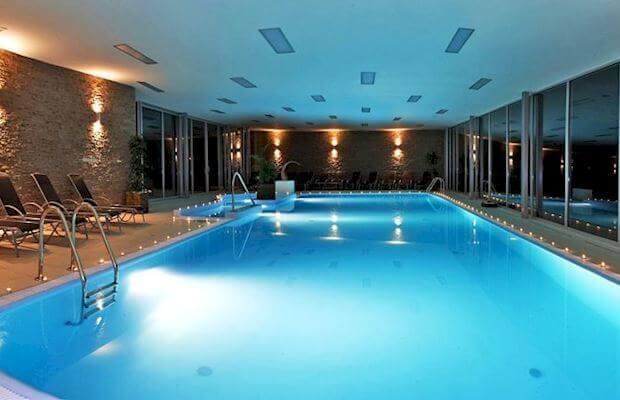
The work of waterproofing is aimed at creating barriers, completely impervious to water. This barrier prevents moisture saturation of concrete or reinforced masonry structures of the pool. The pools are open-type devices require both external and internal waterproofing.
Select the type of waterproofing for the pool depends directly on the place of application to the pool. In that case, if carried out waterproofing works for the pool, which is located outside of the building and the outside part of the pool in contact with the soil, it is necessary to carry out the work of waterproofing of both external and internal surface of the bowl. If the pool is inside the house, then waterproofing only on the inside of the pool.
High-quality and reliable waterproofing barrier is required to a hairline crack in concrete Foundation did not penetrate the moisture. It promotes corrosion and deterioration of internal metal framework (armature). And this, in turn, leads to loss of strength and stiffness of monolithic reinforced concrete construction. For outdoor pools, when the penetration of water into the concrete in the cold season, perhaps of the destruction of concrete due to alternate cycles of freezing and thawing.
In contrast to the waterproofing, is performed for the foundations of houses, to waterproofing materials of the pool are increased requirements. This is due to the fact that the design of the pool is subjected to dynamic loads and thermal expansion. Because of this, the main requirements to the material of waterproofing is the elasticity and fracture toughness.
It should be remembered that the protection structures of the pool from external moisture provides a comprehensive approach. In the case when the location of the outdoor pool due to the nature of the ground has a high groundwater level, it is necessary to perform a drainage system aimed at abstraction. In this case, structural elements of the pool will be protected, and this will increase the period of safe operation of the pool.
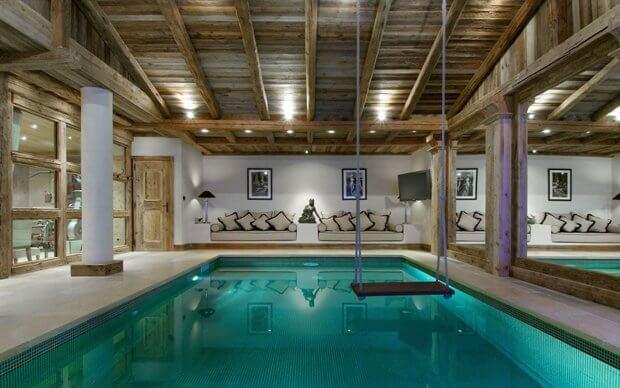
For waterproofing of the pool there are the following materials:
— polymer composition (having colmatation properties);
— covering and lining materials;
— obmazochnoy waterproofing (bitumen, polymer and polymeric membranes and liquid rubber);
— special PVC film (can be used as a finishing coat).
Most commonly for swimming pools for the device waterproofing and protective and decorative coatings, as well as in the construction of sealing units applied in polymer and polymer materials.
Colmatation properties of the polymer compositions allow the composite material to penetrate to a considerable depth in the design of the pool (concrete), thereby significantly reducing the risk of damage to the waterproofing layer or the peeling from the pool. Additionally it should be noted the ability of this type of material to fill the cracks that occur in the process of operation. The possibility of their use both outside and inside the pool. The advantages of these materials are durability and low susceptibility to adverse impacts to groundwater, as well as resistance to the possible penetration of chemically aggressive water from the pool (in the case of the violation of internal waterproofing). The disadvantage is the high price.
At performance of works should pay particular attention to the observance of temperature and humidity conditions as the air and the concrete. Apply polymer and polymer-cement materials should not less than 28 days after the completion of monolithic works.
Okleechnoy waterproofing is done film or rolled materials by their sticking on the outer wall of the pool using a special mastic. This type of insulation has excellent technical characteristics: resistance to various impacts, high water resistance and durability. Disadvantages – shorter life spans compared to the polymer compositions.
Membrane waterproofing for exterior use is one of the varieties okleechnoy waterproofing using latest technologies. The essence of membrane waterproofing is the application of thin, elastic, reinforced special roll material systems capable of carrying a greater load. The advantage of membrane waterproofing over conventional gluing or cement consists in the possibility of its use in all conditions, up to extra heavy. Therefore, the scope of the waterproofing membrane is virtually unlimited.
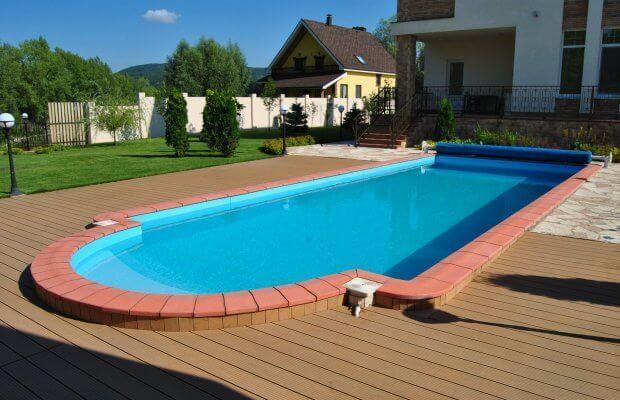
As obmazochnoy waterproofing compositions for the outer part of the pool can also be used bitumen. Advantage is low price, but at the same time, such coverage is short-lived.
The basis of polymeric materials are polyetheramine and diamines.Polymer compositions are made by mixing a dry mix based on cement, graded sand and special additives and water dispersion, and a highly elastic synthetic resin.
Polymer and polymer compositions to form a seamless elastic film that is vapor permeable and is quite durable. Have good adhesion to building materials, particularly concrete. The advantages include high ease of application of the compositions. The disadvantages include the fact that after treatment of the pool with such waterproofing have difficulty with the subsequent facing of the tank with the tile (if required).
When applying polymer compounds on the inner surface of the pool manufacturers recommend applying them to the concrete base at least 6 months with a residual moisture content of not more than 3 %.
The device works on the application of polymer and polymer membranes as follows: first, the composition is applied to the angles and lines of the junction, which are glued strips of reinforcing fabric, over which is applied a second layer composition. Then the composition is applied to the walls and bottom of the pool with the help of roller or trowel. Then on top plank of the reinforcing fabric, which is then again covered with a layer of the composition.
Liquid rubber – bitumen mastic, water-based with latex modification (bitumen-latex mastic). This substance is applied on the prepared surface of the pool by the method of cold spraying. Two-component emulsion has an enviable resistance to chemicals, including those used for water purification, but also have some drawbacks, including fragility and incompatibility with many materials.
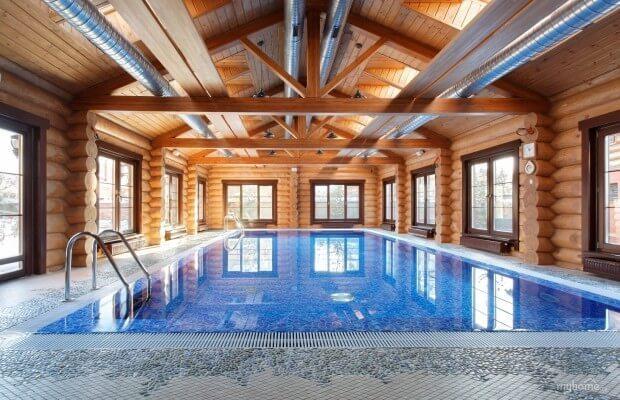
The film of polyvinyl chloride for pools involves different kinds of similar products for swimming pools. They differ in the degree of elasticity and material density. Thick PVC reinforced fabric strip with subsequent antimicrobial and fungicidal treatment. The biological material is protected by impregnation against harmful microorganisms, bacteria, spores, and fungi which are in water. Advantage is a fast and easy installation, the material does not lose integrity with little deformation and the appearance of small cracks in the pool. The disadvantages include susceptibility to mechanical damages and the presence of visible seams at the junction of the parts of the film. published
P. S. And remember, only by changing their consumption — together we change the world! ©
Join us in Facebook , Vkontakte, Odnoklassniki
Source: www.stroitelstvo365.ru/stroitelnie-materiali/gidroizolyatsiya-basseina

The work of waterproofing is aimed at creating barriers, completely impervious to water. This barrier prevents moisture saturation of concrete or reinforced masonry structures of the pool. The pools are open-type devices require both external and internal waterproofing.
Select the type of waterproofing for the pool depends directly on the place of application to the pool. In that case, if carried out waterproofing works for the pool, which is located outside of the building and the outside part of the pool in contact with the soil, it is necessary to carry out the work of waterproofing of both external and internal surface of the bowl. If the pool is inside the house, then waterproofing only on the inside of the pool.
High-quality and reliable waterproofing barrier is required to a hairline crack in concrete Foundation did not penetrate the moisture. It promotes corrosion and deterioration of internal metal framework (armature). And this, in turn, leads to loss of strength and stiffness of monolithic reinforced concrete construction. For outdoor pools, when the penetration of water into the concrete in the cold season, perhaps of the destruction of concrete due to alternate cycles of freezing and thawing.
In contrast to the waterproofing, is performed for the foundations of houses, to waterproofing materials of the pool are increased requirements. This is due to the fact that the design of the pool is subjected to dynamic loads and thermal expansion. Because of this, the main requirements to the material of waterproofing is the elasticity and fracture toughness.
It should be remembered that the protection structures of the pool from external moisture provides a comprehensive approach. In the case when the location of the outdoor pool due to the nature of the ground has a high groundwater level, it is necessary to perform a drainage system aimed at abstraction. In this case, structural elements of the pool will be protected, and this will increase the period of safe operation of the pool.

For waterproofing of the pool there are the following materials:
— polymer composition (having colmatation properties);
— covering and lining materials;
— obmazochnoy waterproofing (bitumen, polymer and polymeric membranes and liquid rubber);
— special PVC film (can be used as a finishing coat).
Most commonly for swimming pools for the device waterproofing and protective and decorative coatings, as well as in the construction of sealing units applied in polymer and polymer materials.
Colmatation properties of the polymer compositions allow the composite material to penetrate to a considerable depth in the design of the pool (concrete), thereby significantly reducing the risk of damage to the waterproofing layer or the peeling from the pool. Additionally it should be noted the ability of this type of material to fill the cracks that occur in the process of operation. The possibility of their use both outside and inside the pool. The advantages of these materials are durability and low susceptibility to adverse impacts to groundwater, as well as resistance to the possible penetration of chemically aggressive water from the pool (in the case of the violation of internal waterproofing). The disadvantage is the high price.
At performance of works should pay particular attention to the observance of temperature and humidity conditions as the air and the concrete. Apply polymer and polymer-cement materials should not less than 28 days after the completion of monolithic works.
Okleechnoy waterproofing is done film or rolled materials by their sticking on the outer wall of the pool using a special mastic. This type of insulation has excellent technical characteristics: resistance to various impacts, high water resistance and durability. Disadvantages – shorter life spans compared to the polymer compositions.
Membrane waterproofing for exterior use is one of the varieties okleechnoy waterproofing using latest technologies. The essence of membrane waterproofing is the application of thin, elastic, reinforced special roll material systems capable of carrying a greater load. The advantage of membrane waterproofing over conventional gluing or cement consists in the possibility of its use in all conditions, up to extra heavy. Therefore, the scope of the waterproofing membrane is virtually unlimited.

As obmazochnoy waterproofing compositions for the outer part of the pool can also be used bitumen. Advantage is low price, but at the same time, such coverage is short-lived.
The basis of polymeric materials are polyetheramine and diamines.Polymer compositions are made by mixing a dry mix based on cement, graded sand and special additives and water dispersion, and a highly elastic synthetic resin.
Polymer and polymer compositions to form a seamless elastic film that is vapor permeable and is quite durable. Have good adhesion to building materials, particularly concrete. The advantages include high ease of application of the compositions. The disadvantages include the fact that after treatment of the pool with such waterproofing have difficulty with the subsequent facing of the tank with the tile (if required).
When applying polymer compounds on the inner surface of the pool manufacturers recommend applying them to the concrete base at least 6 months with a residual moisture content of not more than 3 %.
The device works on the application of polymer and polymer membranes as follows: first, the composition is applied to the angles and lines of the junction, which are glued strips of reinforcing fabric, over which is applied a second layer composition. Then the composition is applied to the walls and bottom of the pool with the help of roller or trowel. Then on top plank of the reinforcing fabric, which is then again covered with a layer of the composition.
Liquid rubber – bitumen mastic, water-based with latex modification (bitumen-latex mastic). This substance is applied on the prepared surface of the pool by the method of cold spraying. Two-component emulsion has an enviable resistance to chemicals, including those used for water purification, but also have some drawbacks, including fragility and incompatibility with many materials.

The film of polyvinyl chloride for pools involves different kinds of similar products for swimming pools. They differ in the degree of elasticity and material density. Thick PVC reinforced fabric strip with subsequent antimicrobial and fungicidal treatment. The biological material is protected by impregnation against harmful microorganisms, bacteria, spores, and fungi which are in water. Advantage is a fast and easy installation, the material does not lose integrity with little deformation and the appearance of small cracks in the pool. The disadvantages include susceptibility to mechanical damages and the presence of visible seams at the junction of the parts of the film. published
P. S. And remember, only by changing their consumption — together we change the world! ©
Join us in Facebook , Vkontakte, Odnoklassniki
Source: www.stroitelstvo365.ru/stroitelnie-materiali/gidroizolyatsiya-basseina
TMJ: How changes in one organ causes a cascade of reactions throughout the body
How to care for pandanus in the home
